
Socrates Sets New World Record
On Saturday, hundreds of people welcomed Jeanne Socrates and Nereida as she coasted across the finish line into Victoria, British Columbia, to become the oldest person to sail alone, nonstop and unassisted around the world.
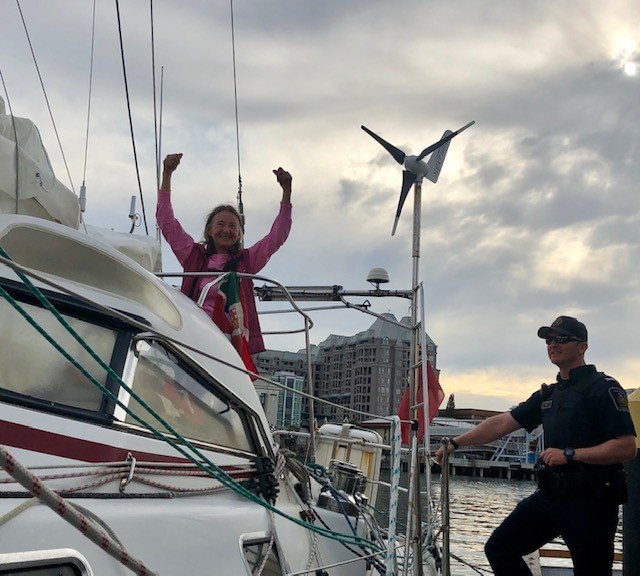
“This is one of the greatest voyages of all time,” Steve Illman, a sailor and friend of Socrates, told the CBC. “A 77-year-old woman has battled unbelievable hardships on this trip. She [was] not in the best physical shape when she left, but she managed; she survived this journey and repaired that boat against great odds and we are amazed by her resourcefulness.”
Socrates was just 35 days shy of being at sea for an entire year. Prior to her weekend finish, she was essentially drifting off the US and Canadian coasts, staying clear of commercial vessels and cruise ships, and waiting for wind to carry her up the Strait of Juan de Fuca.
“ETA: Looking like early Saturday morning, since clearly won’t make Victoria in daylight today, Socrates wrote on her blog on Friday. “Still nearly 60 [miles] to go, which would take 12 hours if we averaged 5 knots, and we haven’t once made that speed yet today. (The weather gods seem to have decided to send their usual light winds into the Strait where we are now, to slow us down.)”
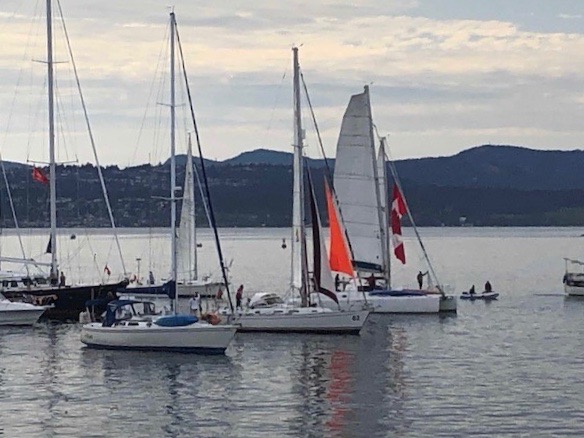
The damage suffered by Socrates’ Naja 380 Nereida on their lap around the planet are too numerous to name. There were problems with the mainsail when Socrates entered the Southern Ocean, and she was still working on her main when she passed Tahiti back in July. Socrates also took a vicious knockdown off Tasmania in May, where she lost her solar panels and damaged her wind-charging unit.
This is not the first world record for the now 77-year-old Englishwoman. In 2013, she became the oldest woman to sail alone, unassisted and nonstop around the world, “a 259-day journey that also started and finished in Victoria,” the CBC said. She was awarded with a Guinness World Record for that feat.
Socrates has had her eye on the oldest-person benchmark for more than a few years. She was preparing to depart in 2017 when she took a bad fall off a ladder while in a Victoria boatyard, and was forced to abandon that year’s attempt. She was 75 at the time — Socrates turned 77 just a few weeks ago.

“The Royal Victoria Yacht Club congratulated Socrates on Saturday for completing her solo circumnavigation unassisted and setting the record for being the oldest person to do so,” said The Guardian.
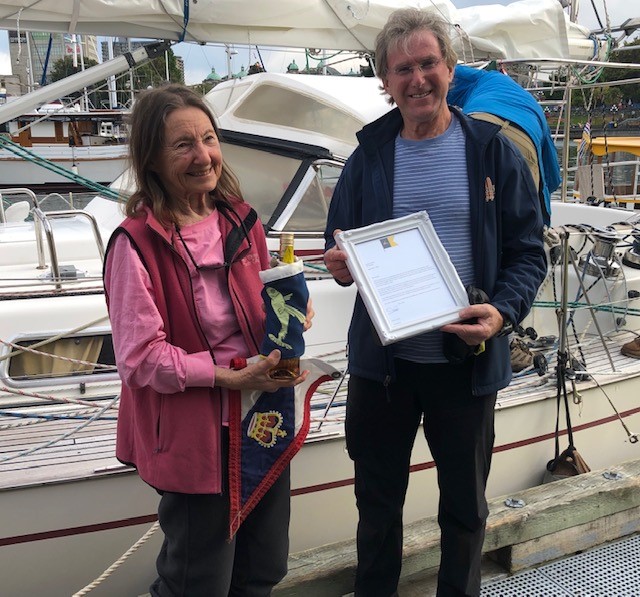
Socrates was supporting the UK’s Royal National Lifeboat Institution throughout her trip, raising nearly $2,500, according to The Guardian.
To our knowledge, Socrates has yet to speak with the media following her arrival. We hope to chat with her in the next few weeks. Stay tuned.
Overwhelmed by the ‘Conception’ Fire, We Ask: What Now?
We are still reeling from the tragic Conception fire, which killed 34 divers off Santa Cruz Island a week ago today. We are also haunted by the question of, what now? In over 40 years of publishing Latitude 38, we’ve run many stories about boat fires, but never one with such an unimaginable loss of life.
One of those lost was part of our local sailing family. Kristy Finstad, 41, owned a dive company in Santa Cruz. She sailed in the Baja Ha-Ha with Bill Lilly aboard Moontide, has been featured in Changes in Latitudes, and sailed in the Pacific Puddle Jump with boatmate Dan Chua aboard their Maxim 38-ft cat Te Poerava. She was the daughter of Bill Finstad, who was one of the first scuba instructors back in 1972, and who had a dive shop/ adventure-travel dive business right next to O’Neill in Santa Cruz Harbor.
Like many of you, we are overwhelmed with grief for the victims and their loved ones. Though we’ve never been on a dive trip with Truth Aquatics, earlier this year, we took a liveaboard dive trip on a boat with similar accommodations. The cabins were below with a single aft stairway leading abovedeck, and a vertical escape ladder leading to a closed hatch at the other end of the central hallway. The thought of a fire aboard and having to escape never crossed our minds until last weekend. Now we’re wondering: Would we have been able to find our way in the smoke and chaos, climb the ladder, and open the hatch? Could it be opened? We never checked.
So where do we go from here? As we await the recovery of the Conception and the results of the National Transportation Safety Board investigation, we think the best way to acknowledge and pay tribute to those lost is to take a hard look at our own vessels and redouble our efforts to make them as safe as possible for every soul.
For our own boats we should ask: Are our fire extinguishers up to date? Are the bilge blowers working? Do we have enough bilge pumps and do they work? Do we have the proper sound-producing device and up-to-date flares? We think it’s a good time to take advantage of the Coast Guard Auxiliary’s longstanding service of free courtesy inspections.
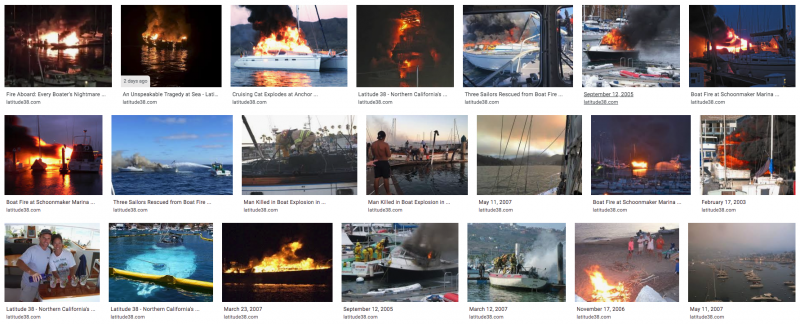
It’s a sad truth of human nature that we often don’t pay enough attention to what could happen until it does happen. As with earthquakes, ship sinkings and plane crashes, it’s only after these horrific events and their devastating cost in innocent lives that the lessons become crystal clear. While we often recoil at the idea of new regulations, it is from disasters like the Conception that rules and guidelines emerge, making it safer for all of us. As hard to imagine as it is right now, the Conception tragedy will eventually do the same for the diving community — and perhaps all of recreational boating. The changes it brings will greatly reduce the chances that something like this will ever happen again.
Going forward, we encourage all boaters to let the officials do their jobs, and have respect for the victims’ families, the surviving crew, and Truth Aquatics, who by almost every account have been an exemplary, safety-conscious and well-run marine business for decades. The ‘instatwit’ nature of modern news demands instant explanations when time and space are needed to accurately discover and process the details of a tragedy of this scale. The tragic Ghost Ship fire investigation and trial just concluded after nearly three years, with a hung jury and disputed ‘facts’.
The Conception tragedy did not involve a sailboat but involved sailors and those with whom we share the sea. That family includes everyone who loves Mother Ocean and all the beings, human or otherwise, who live in or upon it. Our hearts go out to the families and everyone impacted by this event. We’ll keep you updated with findings as they are revealed.
Until then, do what you can to refresh all your safety systems and say a prayer for the victims while we wait to learn what’s both useful and true.
Free Pumpout Nav App
Find Me at the Crew Party
Nation — As always, Latitude’s newest (and managing-est) editor will be wearing his blue and gold Latitude long sleeve T-shirt — with the number 38 on the back — on Wednesday at the Crew List Party at the Bay Model in Sausalito.
And he has a favor to ask.
Please come find him and tell him what you’ve been up to in your sailing life — or better yet, what you’re dreaming of. Planning on buying a boat? Going cruising? Taking up windsurfing? See any good sailing movies or read any good sailing books lately?
Please let him know.
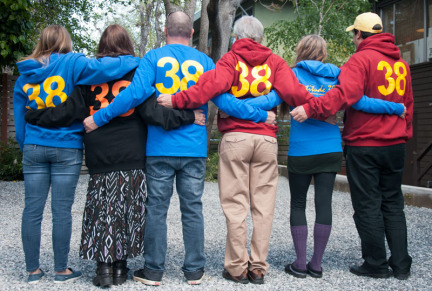
The Crew List Party is also an opportunity for us to hear from our readers about the precious pages of Latitude that we pour our hearts and souls into. Is there a particular article that resonated with you? A photo? Caption Contest(!)? Quip or turn of phrase?
Please let him know.
We can’t wait to see you there.
Briggs Cunningham: Sportsman, Gentleman, Sailing Gadget Inventor
Diesel, Kalashnikov, Graham (crackers), Mason (jars), Ohm, Edsel, Ferris — the list is long of items, properties or ideas named for the people who came up with them. One of the most familiar to sailors is the cunningham, that now-familiar tackle used to tension the mainsail luff. It is named for Briggs Cunningham II, the tall, dashing race car driver/builder, and victorious skipper of the 1958 America’s Cup.
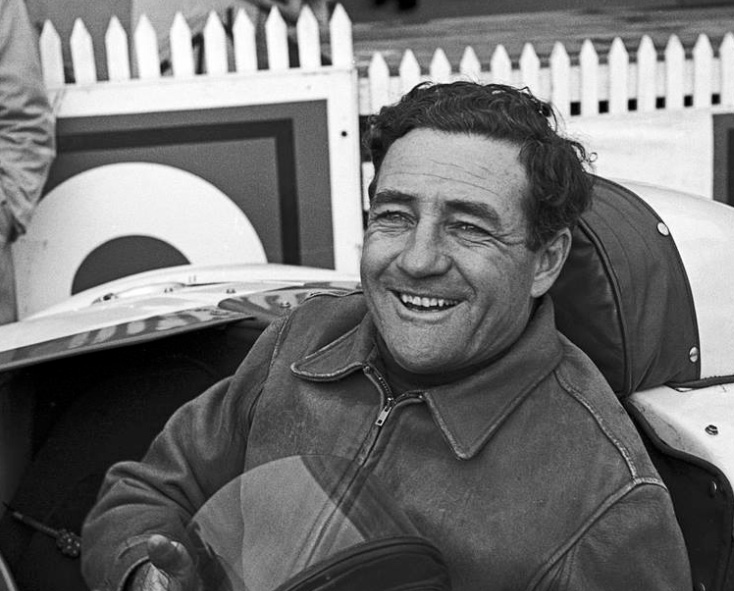
Born into money in Cincinnati in 1907 (his father had built a fortune in railways, utilities and real estate), the younger Cunningham is best remembered for his exploits in the world of car racing. By his early 20s, he was wheeling exotic sports cars around tracks both at home and abroad. By his 30s, he was building race cars in a large facility in West Palm Beach, just a short hop across Florida’s Intracoastal Waterway from the seaside estate socialite Marjorie Merriweather Post had christened Mar-a-Lago.
A consummate sportsman, Cunningham was also a golfer, tennis player, boxer and bobsledder. But after car racing, his second love appears to have been sailing. At age 17, he was racing Star boats out of the Pequot YC in Connecticut. In 1930, he married Lucie Bedford (their combined family fortunes were said to have made them the richest couple in America at the time) and spent part of his Mediterranean honeymoon sailing his new 6-Meter, Lucie. The next year, he crewed on the breakthrough new S&S yawl Dorade in the ’31 Fastnet — a victory that resulted in a ticker tape parade for the crew down Broadway upon their return stateside. He owned many boats and collected many trophies over the years, but spent a lot of his on-the-water time with the 30-ft Atlantic Class fleet — a popular Starling Burgess sloop that still boasts a strong fleet Down East. Among his contributions in decades with that group, he paid to have a mold taken off one of the hulls so it could be produced in fiberglass. (They were originally built of wood by Abeking and Rasmussen in Germany, and the plans had been destroyed in Allied bombing during the war.) He also owned the 62-ft Olin Stephens-designed schooner Brilliant in the mid ‘40s, and later donated it as a sail training vessel to the Mystic Seaport Museum, where it still operates today.
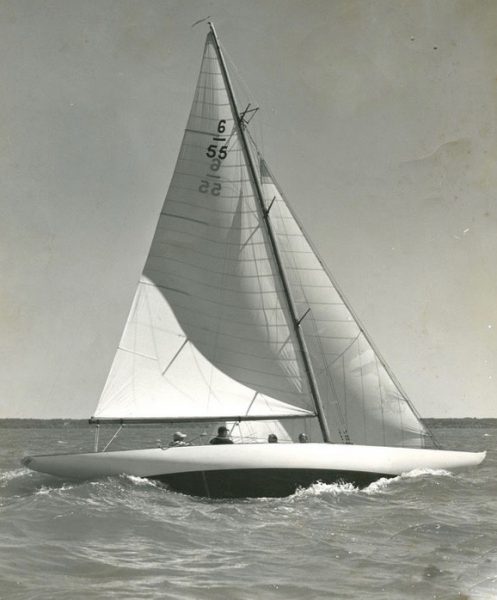
His involvement in the America’s Cup came in the first post-World War II bout. In the 1937 Cup, Harold Vanderbilt’s J-Class Ranger had prevailed, and it had long been thought that the revived event would again feature the magnificent 120-ft J Class sloops. Economics and the desire to field more affordable yachts led the New York YC — holders of the Auld Mug since the schooner America won it in 1851 — to settle on 65-ish-foot sloops built to the 12-Meter rule. Cunningham was initially asked to help finance the NYYC syndicate building Columbia, US 16. But after legendary skipper Conelius Shields suffered a heart attack, Cunningham, then 51, was asked to take his place. (Shields survived, and served as tactician and alternate helmsman during the racing.)
The 1958 defender trials were more hard-fought than almost any actual Cup series. Sailing against two other new boats, Easterly and Weatherly, and an old but radically rebuilt one, Vim, Columbia barely eked out victory over the latter boat by virtue of superior handling in bouncy, windy conditions. By contrast, the Cup races themselves were a cakewalk. The British Sceptre tipped the scales at a buxom 68,000 pounds, to Columbia’s almost dainty 57,000, and was soundly trounced four-zip in the best-of-seven series.
In his later years, Cunningham founded a museum in Orange County to showcase both his own cars and other exotics he had collected over the years. It was finally sold off and closed its doors in the mid-80s.
Briggs Cunningham II died of complications from Alzheimer’s in Las Vegas in 2003. (Not to come to a grim full circle, but Alzheimer’s was named after Dr. Alois Alzheimer in 1906.) He was 96.
In the interests of full disclosure, we could not for the life of us find exactly when, where and how Cunningham came up with the luff-tightening idea named for him. If anyone out there knows, please drop us a line.
Correction: We originally said that Mr. Cunningham was racing Stars out of the Pequod YC in Maine. As it turns out, there is no Pequod YC in Maine. We meant to say the Pequot YC in Connecticut.

